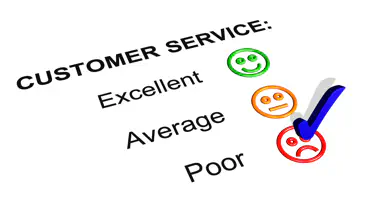Wise Investing: Customer Surveys and ROI
Conducting customer surveys is a common business practice. Within the last two weeks alone, I have been asked to complete three customer surveys.
Q: Why is surveying customers such a common practice? A: Because of the belief that customer surveys pay off with increased profits. Is this belief correct or is the practice of surveying customers one that simply gives companies a false sense of empowerment? Social scientists all over the world have conducted much research across a broad range of industries in order to answer this question. One such study, conducted by John Bowen and Shiang-Lih Chen, professors at the University of Nevada in Las Vegas, examined the relationship between customer loyalty and customer satisfaction. Their study, published in the International Journal of Contemporary Hospitality Management, examined customer survey results and their impact on return on investment (ROI) at a hotel in Boston. Their data, consistent with the results of other studies, indicated a nonlinear relationship between customer satisfaction and customer loyalty. This relationship indicates that when customer satisfaction reaches a certain level, loyalty increases dramatically. However, the relationship also indicates that when customer satisfaction declines to a certain point, loyalty drops dramatically. In Bowen and Chen’s study, when customer satisfaction increased by just one percent, customer loyalty indices increased by over 10 percent!
The results of this study supported the argument that there is a positive correlation between customer loyalty and profitability. Loyal customers provide more repeat business and are less likely to shop around for the best deals compared with non-loyal customers. Loyalty increases profit by reducing marketing costs, increasing sales, and reducing operational costs.
Q: Do the reduced costs brought about by loyalty really have much impact on the bottom line? A: Research conducted by Frederick Reichheld and W. Earl Sasser revealed that when a company retains just five percent more of its customers, profits increase by 25 percent to 125 percent! In light of this and other similar findings, the impact of customer loyalty on the bottom line is obvious. Conducting research to discover how to increase satisfaction and loyalty pays for itself. Customer survey data allows companies to diagnose key attribute drivers that can be addressed by specific marketing and operational strategies within a company. These measurements can also help companies track performance over time, benchmark against competitors’ offerings, and compare performance across different parts of an organization. Customers are the lifeblood of any organization and without them a firm has no revenues, no profits, and no market value. Thus, it is not surprising that a survey of senior executives, published in The Economist, uncovered that 65% of the respondents reported customers as their main focus while only 18% reported shareholders as their main focus.
Numerous examples of customer satisfaction impacting ROI have been reported in the scientific literature. Claes Fornell and Sanal Mazvancheryl used 200 of the Fortune 500 firms across 40 industries to examine the relationship between customer satisfaction and ROI. They found that a 1% improvement in customer satisfaction in these firms led to an increase in the firm’s value of approximately $275 million. In an examination of 140 firms by Christopher Ittner and David Larcker, a 1% increase in customer satisfaction led to a $240 million increase in the market value of a firm. A study of 125 Swedish firms conducted by Eugene Anderson and Vikas Mittal revealed that a 1% increase in customer satisfaction led to a 2.37% increase in ROI.
We all want consumers to choose our products and services (initiation). We also want them to pursue doing business with us with intensity; in other words we don’t want them to vacillate back and forth between our product/service and someone else’s. And, we want a high level of persistence. We want to keep our customers satisfied and coming back to us, rather than dissatisfied and leaving (lack of persistence) to do business with the competition.
There is no doubt that increasing customer satisfaction and loyalty will increase profits. Thus, many studies have attempted to identify crucial components of a customer-focused approach to business. For example, Michael Carver and Gary Cagnon, Professors of Marketing at Central Michigan University, have identified keys to improving customer satisfaction programs. The key activities they identify include:
- a customer-focused culture
- executive support, persistence, and intensity
- a set of customer listening tools
- linking performance measures
- identifying improvement opportunities
- evaluating and rewarding customer value and satisfaction (CVS)
The first key, a customer-focused culture, reflects a cultural value suggesting that satisfying the customer is essential for business success. Thus, a company with a customer-focused culture will continuously monitor and gather customer feedback, analyze and understand the information, and integrate this understanding into tactical and strategic decision-making. In such a culture there is a realization that customer data is just as important as financial data because it will affect the financial outlook in the future.
The second key, executive support, intensity, and persistence, refers to the level of top management support that employees perceive is directly related to using CVS data. When it comes to valuing customers it is important that top management put words into action and set an example for the rest of the company to follow. There is much truth to the saying “Actions speak louder than words.” If top management claims that customers are important but their actions do not support it, employees will believe their actions and not their words.
A set of customer listening tools, the third key, involves having a variety of tools to gain a complete understanding of the customer. Often both qualitative and quantitative research is used to facilitate this understanding.
Identifying improvement opportunities is another key to improving customer satisfaction programs. Best practice firms want employees to have specific priorities for improvement efforts.
Finally, evaluating and rewarding CVS performance is a key that sends a message to employees throughout the organization that CVS is critical to company success. All employees need to be responsible for customer satisfaction. Rewarding the fulfillment of CVS targets motivates employees to continue setting and achieving new goals.
Notice that customer research is a crucial component of these keys. Customer satisfaction and loyalty cannot be increased without research. Unfortunately, not everyone understands the value of conducting research with their own customers. Instead, some believe it is acceptable to rely solely on advice gained by research conducted by other organizations. While research regarding the structure and processes of customer satisfaction improvement initiatives, such as the above keys identified by Carver and Cagnon, can provide helpful guidance, nothing substitutes for hard data obtained from your own customers. The idea that simply following “best practices” will improve customer satisfaction and increase retention is a myth. James Harrington of the Harrington Institute in California, recently published an article titled, “The Fallacy of Universal Best Practices.” in the Total Quality Management & Business Excellence journal.
Research is the only universal best practice. The only way to know the changes your company needs to make is to listen to the voices of your customers. Incorporating customer research into your marketing efforts is a wise investment that will result in a significant ROI. There is a positive relationship between the marketing investment of customer satisfaction and loyalty surveys and ROI. Customer research enables you to identify the key drivers of your customers’ behavior. This facilitates changes that will improve customer perceptions. These improved perceptions lead to increased customer attraction and retention. This increases the customer lifetime value (CLV), the present value of the future cash flows attributed to the customer relationship. This in turn leads to increased customer equity, defined as the total of the discounted lifetime values summed over all of the firm’s current and potential customers. This increased equity can be compared with the cost of the marketing investment in customer surveys to arrive at the marketing ROI.
The National Business Research Institute (NBRI) offers customized and standardized surveys that increase your understanding of your customers and facilitate changes that will increase customer satisfaction and loyalty. If you would like to learn more about how NBRI can help you invest wisely in customer surveys and realize a healthy marketing ROI, call us today at 800-756-6168.
Ken West
Chief Operating Officer
National Business Research Institute




























 By submitting this form you agree to our
By submitting this form you agree to our